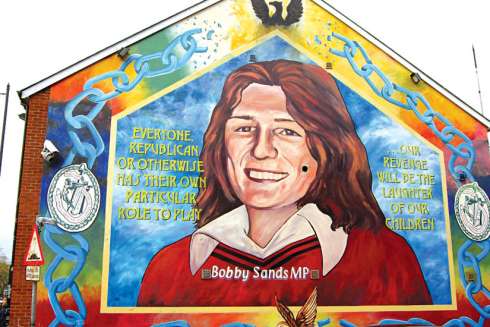It’s like driving from London, Ont., to Toronto on a major freeway like the 401. But the cities are different in many ways and the first couple things you notice are different currencies (Euro versus Northern Ireland pound) and different speed-limit signs (kilometres versus miles.)
Since our Irish ancestors all came from the south, we initially hadn’t planned to go to Belfast, but several friends said we had to see Northern Ireland, especially the new Titanic museum and the beautiful Antrim coast. The world’s most famous ship was built in Belfast and the Titanic museum is tremendous, one of the best I’ve ever visited.
Four giant ship hulls form the exterior of the building and inside are interactive exhibits and rides in nine galleries telling the fascinating story of Titanic’s construction, launch and sinking.
Belfast is in the midst of one of Europe’s biggest urban renewal projects and it is safe today, not like during “The Troubles,” a period in Northern Ireland from 1969 to 1998 when extremists on both sides — unionists/loyalists, who were mostly Protestants, and nationalists/republicans, who were mostly Catholics — were bombing and shooting people regularly. Some 3,600 people died, including 257 children age 17 and younger, according to the University of Ulster’s CAIN (Conflict Archive on the Internet).
The city with a population of about 400,000 is ideal for walkers, made up as it is of distinct cultural quarters, each with its own appeal. It feels new (one wag said that’s because it was bombed so much it had to be rebuilt) and it’s a very clean city.
We took a double-decker bus tour of Belfast that included a trip through distinct Catholic and Protestant neighbourhoods separated by “peace walls” and murals honouring fallen idols on both sides. The most famous and most photographed mural is a haunting one of Bobby Sands, the IRA hunger striker who died in prison in 1981 at age 27.
We splurged and stayed at the best hotels in the two big cities; the Culloden Estate overlooking Belfast’s bay and Dublin’s historic 200-year-old Shelbourne Hotel, where the British army took over and fired upon 1916 Easter Uprising rebels who were camped in St. Stephen’s Green, a park across the street.
Though torn up for construction of a light rail public transit system, Dublin reeks of history from the meandering cobbled streets to the Georgian townhouses to Dublin Castle with its 900-year-old towers to the Book of Kells, the 1,200-year-old Gospel book in Latin painted by monks and housed at Trinity College.
Our second night in Dublin we went on a literary pub crawl beginning at the Duke Pub near Trinity College and ending at Davy Byrne’s, a pub just down the street and made famous in James Joyce’s book Ulysses. Along the way, crawl host Colm Quilligan quoted from famous Irish writers like Joyce, Brendan Behan, Oscar Wilde, Samuel Beckett, William Butler Yeats and more.
The highlight of the evening was an impromptu conversation between visitors about Canada and its historic political battles between the French and English. At one point, a woman turned to Quilligan and asked: “You have any problems like that around here?” The look on his face was priceless and the woman immediately understood her gaffe. Laughter broke out around the table.
Dublin, at 1.2 million people and host to four million tourists per year, is significantly bigger than Belfast, but it didn’t really feel that way. It’s little wonder it consistently tops out as Europe’s friendliest city in polls.
Exploring the Emerald Isle
Read other stories from Robert Brehl below:
- Irish rebels with a cause not forgotten
- Off Ireland's beaten track


